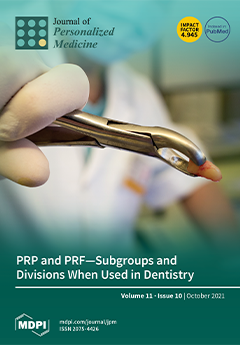Open AccessArticle
A Clinical-Genetic Score for Predicting Weight Loss after Bariatric Surgery: The OBEGEN Study
by
Andreea Ciudin, Enzamaría Fidilio, Liliana Gutiérrez-Carrasquilla, Assumpta Caixàs, Núria Vilarrasa, Silvia Pellitero, Andreu Simó-Servat, Ramon Vilallonga, Amador Ruiz, Maricruz de la Fuente, Alexis Luna, Enric Sánchez, Mercedes Rigla, Cristina Hernández, Eduardo Salas, Rafael Simó and Albert Lecube
Cited by 19 | Viewed by 3251
Abstract
Around 30% of the patients that undergo bariatric surgery (BS) do not reach an appropriate weight loss. The OBEGEN study aimed to assess the added value of genetic testing to clinical variables in predicting weight loss after BS. A multicenter, retrospective, longitudinal, and
[...] Read more.
Around 30% of the patients that undergo bariatric surgery (BS) do not reach an appropriate weight loss. The OBEGEN study aimed to assess the added value of genetic testing to clinical variables in predicting weight loss after BS. A multicenter, retrospective, longitudinal, and observational study including 416 patients who underwent BS was conducted (Clinical.Trials.gov- NCT02405949). 50 single nucleotide polymorphisms (SNPs) from 39 genes were examined. Receiver Operating Characteristic (ROC) curve analysis were used to calculate sensitivity and specificity. Satisfactory response to BS was defined as at nadir excess weight loss >50%. A good predictive model of response [area under ROC of 0.845 (95% CI 0.805–0.880),
p < 0.001; sensitivity 90.1%, specificity 65.5%] was obtained by combining three clinical variables (age, type of surgery, presence diabetes) and nine SNPs located in ADIPOQ, MC4R, IL6, PPARG, INSIG2, CNR1, ELOVL6, PLIN1 and BDNF genes. This predictive model showed a significant higher area under ROC than the clinical score (
p = 0.0186). The OBEGEN study shows the key role of combining clinical variables with genetic testing to increase the predictability of the weight loss response after BS. This finding will permit us to implement a personalized medicine which will be associated with a more cost-effective clinical practice.
Full article
►▼
Show Figures





